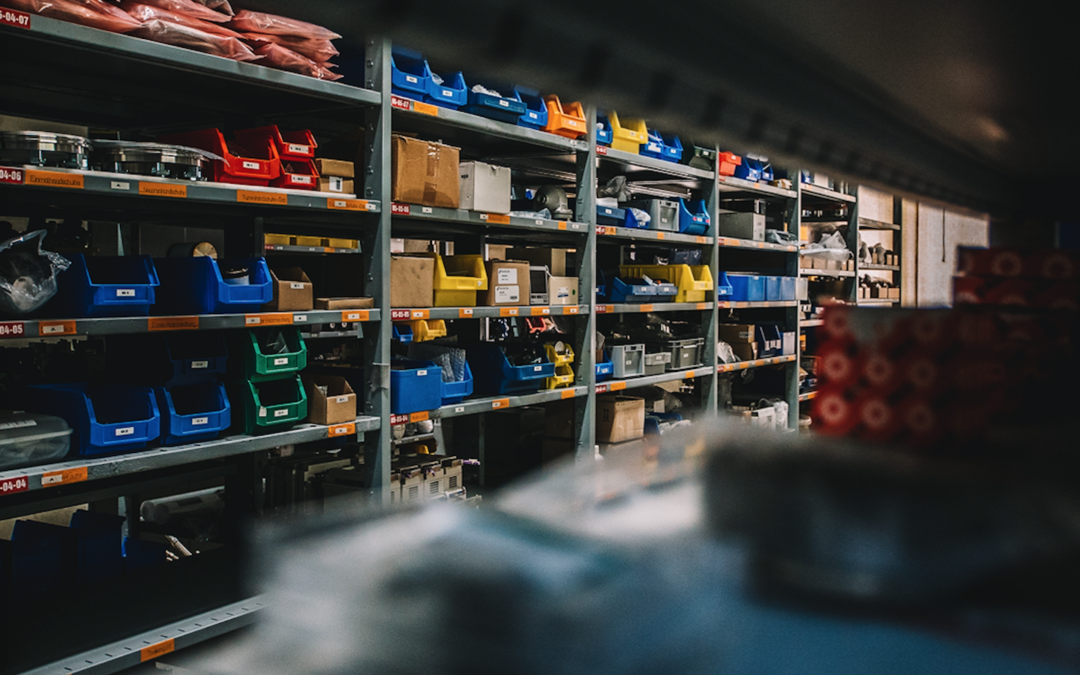Ensuring that your maintenance teams have the right parts, at the right time, in the right condition to execute precise and effective maintenance is crucial. After all, the best technicians working with the best tools, procedures, and instructions can’t execute quality work without quality parts.
Let’s discuss some tips for making sure MRO parts aren’t a cause of poor reliability in your plant.
MRO storerooms fall into two general categories: man-to-part or part-to-man systems. Man-to-part is the typical arrangement, whereby a person picks the parts from shelves or bins using a picking sheet. Part-to-man systems are sophisticated robotic systems and software. The robots pick the parts from shelves and bins and deliver them to the storeroom manager or clerk for distribution.
Proper MRO parts storeroom management is a 5S proposition. An essential component of the Toyota Production System (Lean Manufacturing), 5S includes the following:
1. SORT: eliminate clutter and unnecessary parts and materials.
2. SET-IN-ORDER: ensure a place for everything and everything in its place.
3. SHINE: maintain storeroom cleanliness.
4. STANDARDIZE: create standard practices for all aspects of MRO storeroom management.
5. SUSTAIN: make proper storeroom management a matter of policy in your asset-management strategy.
THE STOREROOM
- The storeroom must be properly sized to comfortably accommodate all the parts that will be kept on hand.
- The storeroom should be separate from the plant to reduce the risk of vibration and contamination, both of which cause shelf degradation. Additionally, separating the storeroom from the plant reduces the risk of pilferage. However, the storeroom must be conveniently located within close proximity to the plant to reduce travel time, which is a wrench-time performance killer.
- The storeroom must be equipped with proper shelving and bins to store parts. For vertical storage, you must account for safe and easy access to the parts.
- The storeroom must be kept clean and free of debris that can cause shelf-degradation of your parts. Remember, a clean storeroom is a happy storeroom.
- The storeroom must be equipped with proper lighting. There is nothing worse than searching in the dark for a part that’s needed to get the plant back up and running.
- Lay out the storeroom logically. Make frequently used items more accessible and infrequently used items less accessible.
THE PARTS
- Get rid of obsolete parts. Sell them, scrap them, whatever. Obsolete parts take up space and consume man hours, sit on your balance sheet while their resale value depreciates more with every passing day, negatively affect your return on net assets (RONA) and yield zero utility in terms of plant reliability and performance.
- Define proper inventory levels:
-
- Use bin mark points for consumables, such as nuts and bolts.
-
-
-
- Use economic-order-quantity (EOQ) calculations for routine maintenance parts.
-
-
-
- Utilize critical-spares-analysis techniques for those parts that you dearly hope that you never have to utilize. Use a cost-benefit driven approach, but that’s a topic for a future article, as critical-spares analysis is pretty complex. (Email me at dtroyer@theramreview.com, if you want to know more about this issue.)
-
- Label parts so they are easy to identify and to streamline the picking process. Bar-code labels and RFID tags can be helpful in saving time.
- For routine jobs, consider pre-picking and kitting an appropriate number of job packs (determined using EOQ calculations) and store them with their own unique part number. Be sure to track the kits’ sub-part numbers to keep your inventory straight.
PARTS-MANAGEMENT PROCESSES
- Utilize clearly defined check-in/check-out processes to track parts receipts and usage. This will greatly reduce deviations between what your computer says you have on hand and what you actually have on hand.
- Limit access to parts to properly trained storeroom personnel. Again, this reduces deviations between what’s reported to be on hand and what you actually have on hand.
- Consider utilizing bar codes or RFID for parts check in and check out. It really streamlines many aspects of parts management, including the physical inventory.
- Perform a physical inventory at least once a year (more frequently if you have a high turnover rate, are running a very lean inventory, or unforeseen stockout situations affect reliability and plant production).
- Employ first-in, first-out (FIFO) inventory, not last-in, first-out (LIFO). Pay special attention to binned parts (e.g. nuts and bolts), and hung parts (e.g. belts and gaskets).
- Create written procedures for all aspects of MRO-parts management.
- Make sure MRO-parts management is included in your asset management policy.
WHEN ALL IS SAID AND DONE
Keep the big picture in mind: Proactive storeroom management based on industry-accepted best practices not only ensures that maintenance personnel can count on having the right parts, at the right time, in the right condition, it also helps support overall reliability in a plant.TRR
ABOUT THE AUTHOR
Drew Troyer has 30 years of experience in the RAM arena. Currently a Principal with T.A. Cook Consultants, he was a Co-founder and former CEO of Noria Corp.. A trusted advisor to a global blue chip client base, this industry veteran has authored or co-authored more than 250 books, chapters, course books, articles, and technical papers, and is popular keynote and technical speaker at conferences around the world. Among other things, he also serves on ASTM E60.13, the subcommittee for Sustainable Manufacturing. Drew is a Certified Reliability Engineer (CRE), Certified Maintenance & Reliability Professional (CMRP), holds B.S. and M.B.A. degrees, and is Master’s degree candidate in Environmental Sustainability at Harvard University. Email dtroyer@theramreview.com.
Tags: reliability, maintenance, MRO parts, storeroom management, critical spares, kitting



